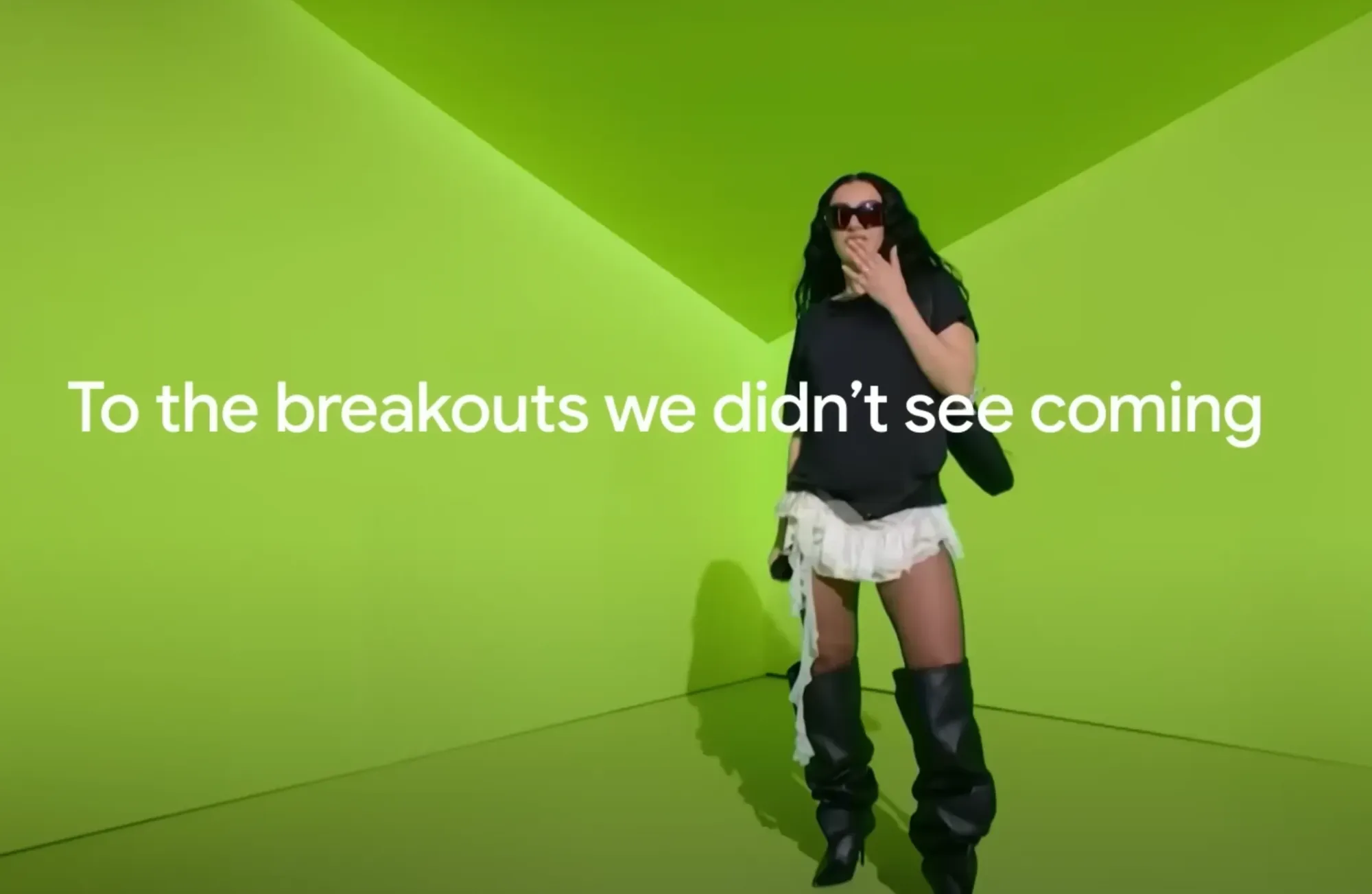Want a head start in 2025? check Google’s year in search 2024 first
Not every trend is worth chasing, but Google’s Year in Search 2024 helps marketers decide what’s worth testing in 2025.

Before diving into new campaigns or strategies for 2025, it’s worth pausing to review what resonated with people in 2024.
Past data doesn’t guarantee future success, but it can offer a clear picture of audience interests, recurring patterns, and emerging trends. For marketers, this serves as a foundation to test ideas, refine messaging, and align strategies with real-world behavior.
Google’s Year in Search 2024 compiles key search trends from the past year, giving marketers a starting point to explore what mattered most to their audience. It’s not about following trends blindly—it’s about using this data as a tool to inform decisions and find opportunities worth exploring in the year ahead.
We’ve compiled actionable ways to use this data for more than just insights—perhaps even answers to your next big marketing questions.
Let’s dive in.
How to use year in search
Start by visiting Google’s Year in Search 2024. You can choose to explore 'Global' for worldwide trends or dive into trends for specific countries. Each selection leads to categories that reflect what was trending in the chosen region.
Global Overview: Provides shortened categories based on worldwide trends, such as:
- Trending: Searches, News, People
- Entertainment: Athletes, Sports Teams
- Sports
- Lifestyle and Gaming: Food and Drink Recipes, Games
- Hum to Search: Trending Songs
- Google Maps: Top Parks, Museums, and Stadiums
Country-Specific Data: Offers categories tailored to what was trending in the selected country. Each country’s available categories differ, depending on what was popular among its audience.
To maximize insights:
- Choose 'Global' to understand overarching trends or pick a specific 'country' for localized insights.
- Explore the listed categories for your chosen selection.
- Identify trends that align with your brand’s objectives.
Then, start with global trends to see the big picture
Google’s Year in Search 2024 starts with the Global Overview, highlighting what captured worldwide attention.
This section offers insights into cultural moments, lifestyle preferences, and societal shifts from 2024. For marketers, this provides an excellent starting point to understand broad trends that resonate across markets.
Global trends are especially useful for brands operating internationally or those looking to align with overarching themes that matter to large audiences. From entertainment to lifestyle and even location-based preferences, the Global Overview gives a bird’s-eye view of what audiences cared about most.
How to use it:
- Explore the Global Overview to find universal themes that align with your brand.
- Incorporate these themes into campaigns that resonate with audiences across multiple regions.
- Use insights from Google Maps or trending songs to align your messaging with cultural and location-based preferences.
For example, if Google Maps data shows increased interest in top parks globally, outdoor brands could position their products around themes of nature, relaxation, or recreation for 2025 campaigns.
Dive deeper into local trends for precise targeting
The real power of Year in Search lies in its ability to provide localized insights. By selecting a specific country, marketers can access trends unique to that region, such as popular recipes, DIY projects, or entertainment categories. These trends reflect the cultural nuances and interests of the local audience, giving marketers the data they need to craft authentic, relatable campaigns.
Localized data is particularly valuable for businesses that operate in multiple markets or those targeting niche regional audiences. By understanding what matters most in a specific country, marketers can move beyond generic campaigns and create content that speaks directly to their target demographic.
How to use it:
- Choose a country from the dropdown menu.
- Review the categories and top searches unique to that country.
- Use these insights to create campaigns that resonate with regional audiences.
For example, in 2024, Australians showed a strong interest in DIY projects. Brands targeting this market in 2025 can create content or campaigns focused on DIY solutions, whether for home improvement or creative hobbies.

Explore specific categories relevant to your brand
Each country’s data in Year in Search highlights specific categories that were trending locally. These categories are only displayed if they were among the top interests in that region. For instance, some countries might show significant interest in “Food and Drink Recipes,” while others might highlight sports or gaming trends.
For marketers, this allows you to focus on the topics that matter most to your audience in specific regions. By leveraging these insights, you can align your content, products, and campaigns with real consumer behavior.
How to use it:
- Identify categories that align with your industry (e.g., Food, Entertainment, Gaming).
- Leverage the trends in those categories to create content or plan campaigns.
- Use the insights to tailor product launches, events, or promotions.
For example, if “sourdough bread recipes” trended in your target region, food brands could create campaigns offering baking kits or sharing recipes that complement this interest.
Use google maps trends for location-based campaigns
Google Maps trends, available only in the Global Overview, highlight the most-searched locations such as top parks, museums, and stadiums. This data is especially valuable for brands looking to create location-based activations or partnerships.
Understanding where people spent their time in 2024 can help marketers plan campaigns that connect with audiences in physical spaces they already value. Whether it’s targeting popular venues with geo-ads or hosting events in high-traffic areas, Maps trends provide actionable insights.
How to use it:
- Review Google Maps categories in the Global Overview to identify top locations.
- Plan events, promotions, or ads targeting these high-interest areas.
- Use geo-targeted online ads to connect with audiences in these locations.
For example, if a stadium was a top-searched location globally, sports or entertainment brands could plan activations tied to events hosted there.

Turn recurring trends into seasonal opportunities
Seasonal patterns revealed by Year in Search provide marketers with a roadmap for planning annual campaigns. Whether it’s New Year’s resolutions or back-to-school shopping, these recurring trends highlight moments when consumer interest peaks.
For businesses, this is an opportunity to time campaigns perfectly, ensuring they align with consumer priorities during high-interest periods. Seasonal insights help you plan ahead, allocate resources effectively, and maximize the impact of your messaging.
How to use it:
- Identify seasonal trends in your chosen country.
- Schedule campaigns or content production to align with these peak periods.
- Plan ad spend strategically to maximize impact during high-interest windows.
For example, if “best budgeting apps” spiked in January 2024, fintech brands could prepare similar campaigns in January 2025 to capture renewed interest in personal finance.
Google’s Year in Search 2024 highlights the topics and interests that captured attention last year, giving marketers a resource to explore for potential insights. While it’s not a crystal ball, the data can help identify trends, recurring themes, or areas worth exploring further.
Using past data is about finding opportunities to test ideas, adjust strategies, or spot patterns that could inform future campaigns. It’s a starting point—not a complete solution—for making more informed decisions in 2025.
FAQs and recap
How do I specify a year in a Google search?
To explore a specific year, visit Google’s Year in Search and select the year you want from the dropdown menu.
How to search from year on Google?
You can’t directly filter Google Search by year for all queries, but on the Year in Search platform, you can select a specific year to see what was trending during that time.
How do I sort search results by year?
Select the desired year on the platform to view the compiled trends for that period.


